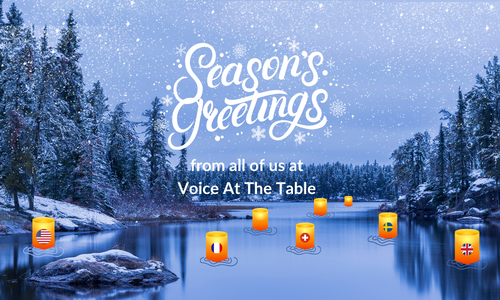We are grateful for all our readers and have been surprised and delighted to see how many of you are opening our newsletters outside the UK, all around the world. We value you all, and we’d like to offer our season’s greetings and wish you all a prosperous and happy New Year.
Inspired by our global readership, we would like to share with you today our top 5 readership locations and take a quick look at some of their festive traditions.
The UK and the USA

Festive traditions in the UK and the US (our biggest readership locations) have a lot in common and have been heavily influenced by each other, so it makes sense to look at them together. In common with many other countries, a visit from Santa Claus is eagerly anticipated by children in both the UK and the US for the gifts that he brings. The real Saint Nicholas was a bishop born in what is now Turkey in 270 AD; he became well-known for his many charitable deeds, and he became the model for Santa Claus (often known as Father Christmas in the UK).
Seasonal decorations and lights are a major part of the run-up to Christmas, both inside and outside houses, and many high streets and shop windows are illuminated and decorated with a seasonal theme. The tradition of ceremoniously switching on Christmas lights in the UK began in 1954 on Regent Street in London.
The decorated Christmas tree is a modern tradition made popular in Britain during the 19th century by Prince Albert, Queen Victoria’s husband, who knew the tradition from his native Germany, and is a key element of an American Christmas too. Decorating the house with holly, ivy, and mistletoe adds to the festive feeling, and bringing greenery into the home is a midwinter tradition dating back to pagan times.
Carol singing is a long-standing tradition where groups of people sing Christmas songs at people’s front doors, going from house to house. This custom dates back to the Middle Ages and these days it’s often used to raise money for charity, continuing the season’s spirit of community and giving.
Sweden

Christmas Peace (in Swedish: julfrid, in Finnish: joulurauha) is a practice that has its roots in ancient Swedish legislation established in the 13th century, building upon the Truce of God tradition. It was designed to encourage respectful and peaceful behaviour at Christmas, as any offenders who committed crimes during the Christmas season would be subjected to harsher punishments than usual. The tradition of Christmas Peace has survived in Finland, which was part of Sweden from the late 13th century until 1809, and in parts of Estonia. The Declaration of Christmas Peace on Christmas Eve is a symbolic and integral part of the Christmas tradition in Finland in the present day, although the message is largely symbolic these days.
A slightly more amusing Swedish tradition is the Yule Goat, a Swedish Christmas symbol dating back to ancient pagan festivals. In the 1960s, the tradition was transformed by the idea to make a giant straw goat weighing more than 3 tonnes and now referred to as the Gävle Goat. The goat is built in the same place every year and it’s possible to watch a livestream of it, from the first Sunday of Advent until it’s taken down again in the New Year!
France

Different French regions used to have their own local traditions, but with modern communications and globalisation, they have become more homogenous, with many of them heavily influenced by neighbouring Germany. One of the most popular is the advent wreath, made of fir and pine tree branches with red bows and pine cones. Unlike the wreaths hung on house doors in many countries, these wreaths are laid flat. They have four candles on top to symbolise the four Sundays leading up to Christmas and they are lit in turn on those Sundays.
The first French Christmas tree appeared in Alsace in 1521, an evergreen tree covered in red apples and candles to symbolise Christ as the light of the world, a symbol of hope and eternal life. Similarly religious and coming from a long Catholic tradition, Nativity scenes are important part of the Christmas celebrations in France. They represent the birth of Jesus in a stable or cave, in Bethlehem in Judea. Both miniature and life-size displays are present in many households, churches and public places in France today, and some of the more famous cathedral scenes attract thousands of visitors each year.
Switzerland

It’s a Swiss tradition for families to make their own advent calendars for the holiday season. The calendars are made together as a fun family activity or presented to children as a gift. Each day reveals a new surprise or treat, with the biggest gift on Christmas Eve.
In common with many other European countries, the tradition in Switzerland is that Santa visits on 6th December. Santa does not bring the main Christmas presents, as those are said to be brought by the Christkind. Instead, Santa takes along a big bag filled with nuts, mandarins, cookies, and chocolates, which he distributes to the children he visits, if they’ve been well-behaved since last Christmas. This concept of rewarding children for good behaviour runs through the festive traditions of many countries.
Goodwill to all men (and everyone else)

One thing that these festive traditions have in common is that they are rooted in faith, family or the friendships that tie people together. It can be a difficult time for the lonely or the bereaved, but also a joyous opportunity to give to others (including donating our time or money to those in greater need) and to reflect on who and what are most important to us.
And now all that’s left is to wish you a relaxing festive season and a happy and healthy 2024, filled with lots more EDI adventures together.


